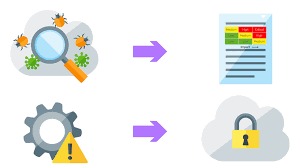Introduction to Cybersecurity Vulnerabilities
Understanding cybersecurity vulnerabilities is more critical than ever in today’s digital age. Both individuals and organizations are at risk of cyberattacks that can lead to data breaches, financial loss, and reputational damage. These vulnerabilities are weak points that cybercriminals exploit to gain unauthorized access to systems. This helpful resource provides a deep dive into CVE vulnerabilities. Recognizing and mitigating these vulnerabilities is essential to safeguarding digital assets and maintaining a secure technological environment.
Common Cybersecurity Vulnerabilities
Cybercriminals frequently exploit several common vulnerabilities. Understanding these vulnerabilities is the first step toward preventing cyberattacks. Recognizing these can help you take preventive measures. Some widely known vulnerabilities include:
- Unpatched Software: Many cyberattacks occur because organizations fail to update their software. Outdated software often contains security flaws that cybercriminals can exploit. Software updates regularly can significantly lower the chance of an attack.
- Weak Passwords: Simple, easily guessable passwords are one of the most significant security risks. Cybercriminals use techniques like brute force attacks to crack weak passwords. Implementing strong password policies is essential for securing accounts.
- Phishing Attacks: Phishing remains a prevalent method for stealing sensitive information. Cybercriminals use misleading emails to get recipients to click on harmful links or divulge personal information. Educating users about the dangers of phishing can help curb this threat.
- Malware Infections: Spyware, ransomware, and viruses are examples of malicious software that may penetrate systems and seriously harm them. Employing reliable antivirus and antimalware solutions can help protect against these threats.
- Insider Threats: Employees or contractors who intentionally or unintentionally cause harm can be a significant risk. Extensive background checks, frequent monitoring, and stringent access controls reduce insider risks.
Case Study: The Impact of a Major Data Breach
One notable example of the consequences of poor cybersecurity is the 2017 Equifax breach. This incident exposed the personal information of 147 million individuals and was caused by unpatched software. Such breaches highlight the importance of applying patches and updates promptly. The Equifax hack made abundantly clear the terrible effects that unpatched vulnerabilities can have on customers and organizations. In addition to monetary losses, reputational harm can be severe and protracted.
Best Practices for Mitigating Vulnerabilities
To protect yourself and your organization, follow these best practices:
- Regular Software Updates: Keeping all software up-to-date is crucial to closing security gaps that cybercriminals could exploit. Automatically updating software can ensure that no updates are missed, providing continuous protection.
- Strong Password Policies: Implementing and enforcing robust password management practices can significantly reduce the risk of unauthorized access. This includes using complex passwords, changing them regularly, and employing multi-factor authentication (MFA).
- Employee Training: Educating employees about common cyber threats, such as phishing, can reduce the risk of human error. Regular training sessions and simulated phishing attacks can keep employees vigilant and informed.
- Use of Security Tools: Several levels of protection against online dangers may be established by utilizing intrusion detection systems, firewalls, and antivirus software. These techniques can assist in identifying and stopping harmful acts before they occur.
- Regular Audits: Frequent security audits can help find and address potential weaknesses in your system and ensure that security procedures are up-to-date and effective against emerging threats.
The Role of Patches and Updates
Ensuring that fixes and updates are consistently applied is crucial for addressing security vulnerabilities. Vendors frequently release updates to rectify known security flaws, which, if not promptly addressed, could be exploited by malicious attackers. Organizations must prioritize patch management to guarantee that all systems are swiftly updated. Automating the patch management process reduces the burden on IT staff, and timely updates can be consistently implemented.
Monitoring and Response
Regular and comprehensive monitoring of your systems and networks is essential for identifying vulnerabilities and potential threats before they can cause significant harm. Investing in advanced intrusion detection and prevention technologies is crucial to continuously monitoring your environment and swiftly responding to anomalies or suspicious activities. Effective monitoring enables the identification of unusual patterns and potential threats that might otherwise be overlooked, allowing for proactive threat mitigation. Furthermore, developing a comprehensive incident response plan is crucial for ensuring a rapid and efficient reaction to security breaches, ultimately reducing the potential damage to your organization and minimizing downtime.
Conclusion
Understanding and effectively addressing cybersecurity vulnerabilities is paramount in safeguarding digital assets. It is essential to stay updated on emerging vulnerabilities and adhere to industry best practices to establish a robust defense system that minimizes the risk of cyberattacks. This involves implementing consistent software updates, conducting comprehensive employee training programs, and ensuring continuous monitoring to fortify your organization’s cybersecurity stance. Protecting your systems and data necessitates a proactive strategy, including regular security assessments, ongoing staff education, and deploying cutting-edge security solutions. In summary, it is imperative to thoroughly comprehend and effectively address cybersecurity vulnerabilities to protect digital assets. Staying abreast of emerging vulnerabilities and adhering to industry best practices is crucial for establishing a resilient defense system that minimizes the risk of cyberattacks. Consistent software updates, comprehensive employee training programs, and continuous monitoring are pivotal in fortifying your organization’s cybersecurity stance. Safeguarding your systems and data necessitates a proactive strategy encompassing regular security assessments, ongoing staff education, and deploying cutting-edge security solutions.
